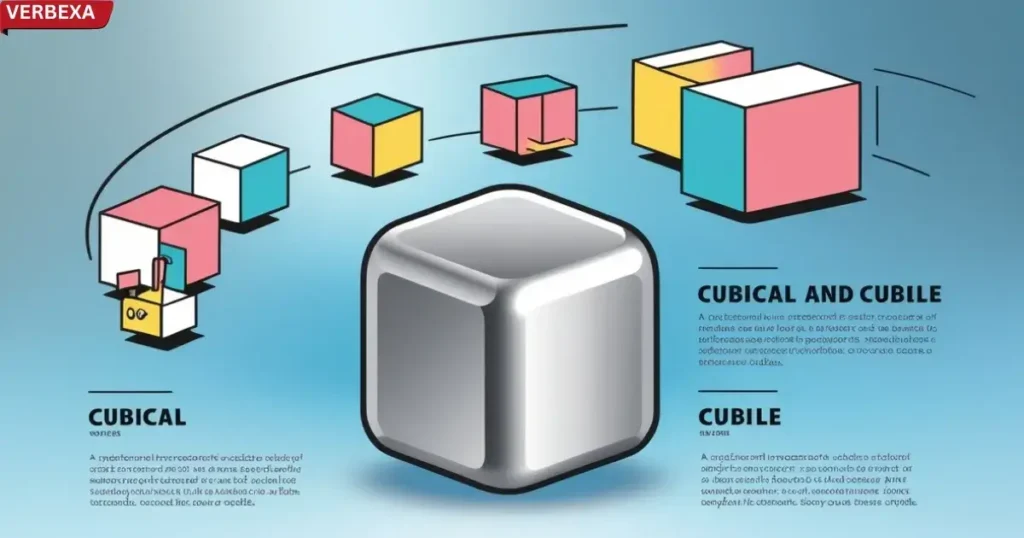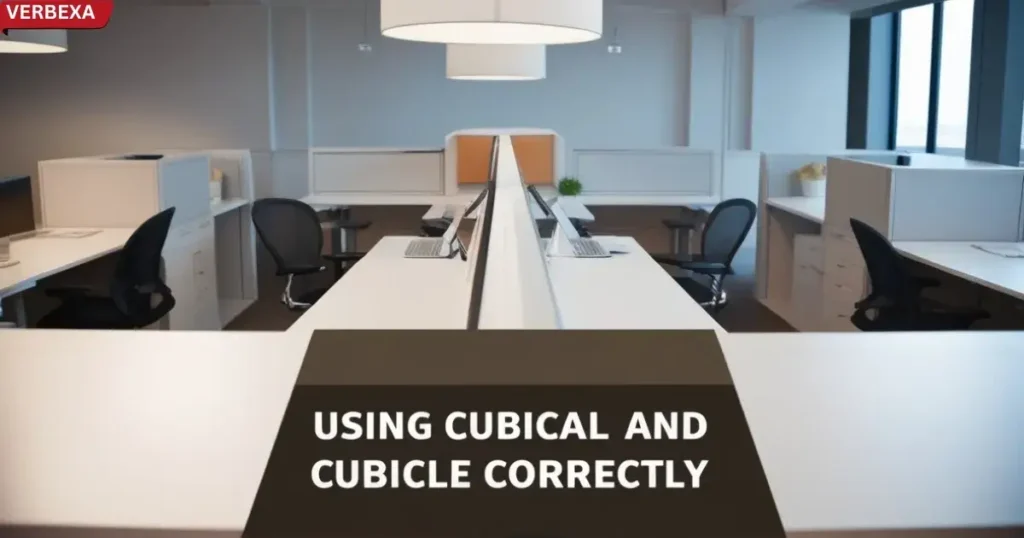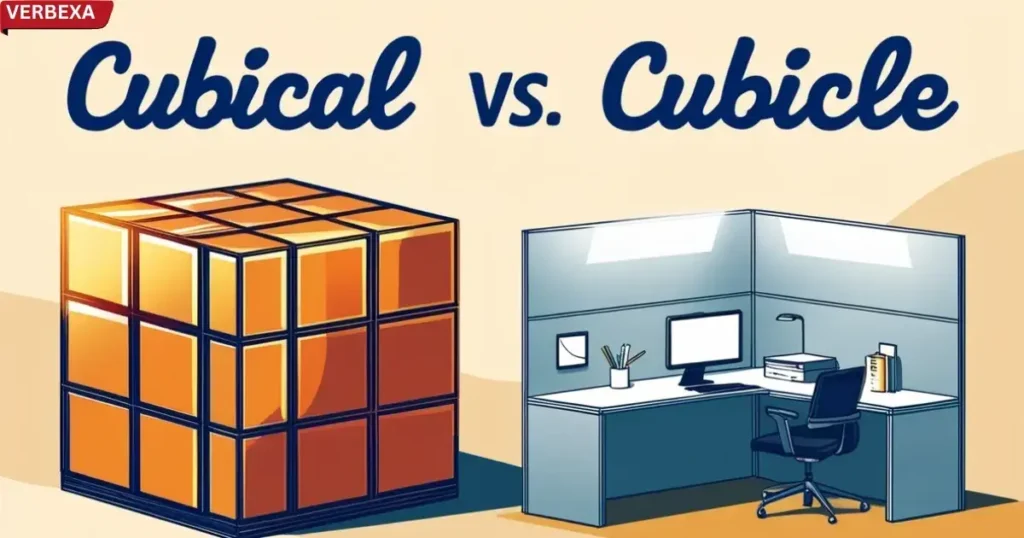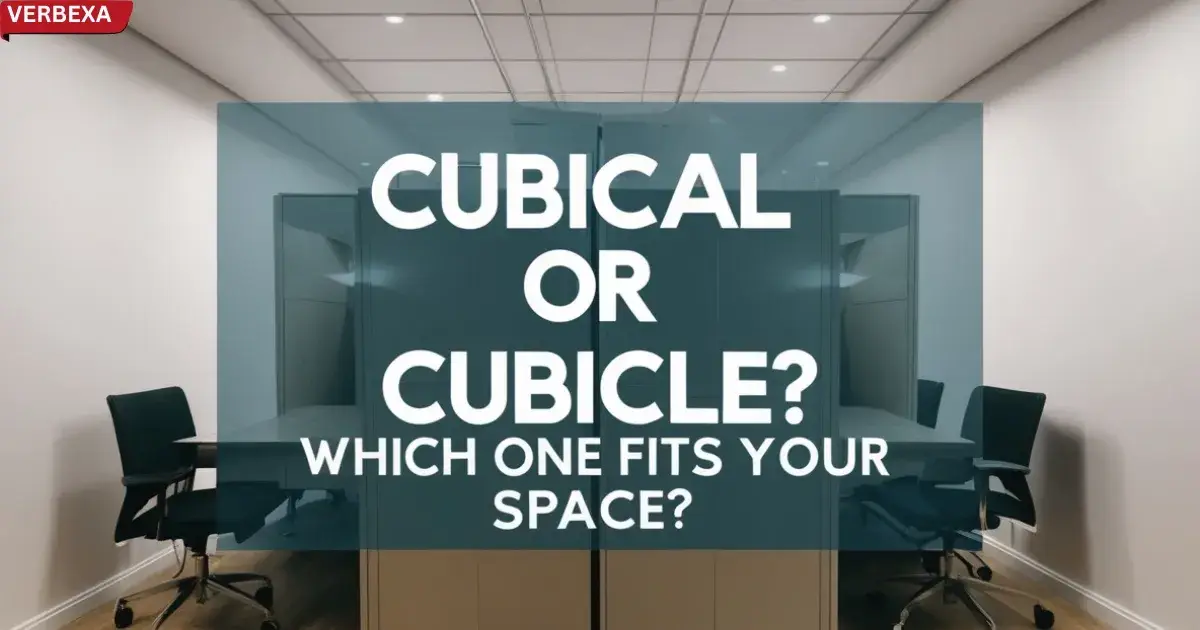Have you ever found yourself hesitating between the words cubical and cubicle, wondering which one truly fits the context? You’re not alone. These cubical or cubicle terms often create confusion, leading even seasoned writers and speakers to pause mid-sentence. Understanding the nuanced difference between cubical vs cubicle is more than just a grammatical nicety—it’s about precise communication.
Imagine describing an office layout or a geometric shape, only to realize you’ve used the wrong term. The stakes might seem small, but in professional and academic settings, precision matters. Whether you’re drafting a scientific paper, designing a workspace, or simply engaged in everyday conversation, knowing when to use cubicle or cubical can save you from potential embarrassment. This article will delve into the cubicle vs cubical debate, offering a comprehensive guide to understanding their distinct meanings and appropriate usage.
Understanding Cubical and Cubicle: Definitions and Applications

Cubical: More Than Just a Shape
Cubical is an adjective that describes something having a cube-shaped or cubic-like structure. In geometrical contexts, it relates to three-dimensional objects with equal sides and right-angled corners. Scientists might use this term when discussing crystal structures or mathematical representations.
Example scenarios:
- The researcher examined the cubical crystal formation under a microscope.
- Engineers designed a cubical storage unit with precise dimensions.
Cubicle: A Space of One’s Own
Cubicle is a noun representing a small, partially enclosed workspace or personal area, typically found in office environments or restrooms. It’s about privacy and space organization in shared settings.
Example scenarios:
- Sarah decorated her cubicle with inspirational posters and family photos.
- The new office design increased cubicle space for each employee.
Synonyms Exploration
Cubical Synonyms:
- Cube-shaped
- Cubic
- Geometrically uniform
- Equilateral
- Symmetrical
- Angular
- Boxlike
- Rectilinear
- Prismatic
- Orthogonal
Cubicle Synonyms:
- Workspace
- Partition
- Booth
- Stall
- Enclosure
- Compartment
- Alcove
- Nook
- Workstation
- Personal space
Comprehensive Comparison Table
| Aspect | Cubical | Cubicle |
|---|---|---|
| Part of Speech | Adjective | Noun |
| Primary Context | Geometric, Mathematical | Workplace, Personal Space |
| Shape Characteristic | Cube-like, Equal Sides | Partitioned, Enclosed |
| Usage Domain | Scientific, Structural | Office, Restroom |
| Key Descriptor | Cube-shaped | Partitioned Space |
Using Cubical and Cubicle Correctly

Applying Cubical Methods
- Describing three-dimensional objects
- In scientific or mathematical discussions
- When referring to uniform, cube-like structures
Using Cubicle
- Describing workplace personal spaces
- Referring to partitioned areas in offices
- Discussing restroom stalls
- Explaining workplace environment layouts
Everyday Usage Examples
Cubical Examples:
- The cubical design of the laboratory equipment ensured uniform measurements.
- Architects preferred a cubical framework for the modular building project.
Cubicle Examples:
- Mark personalized his cubicle with plants and family photographs.
- The open-plan office featured flexible cubicle arrangements.
Advanced Linguistic Insights
In workplace environments, understanding the distinction between cubical or cubicle goes beyond mere semantics. It reflects an understanding of space organization and privacy concepts. The cubicle represents more than a physical space—it’s a symbol of personal territory within shared office landscapes.
Practical Tips for Remember the Difference

- Cubical: Think “Cube” + “al” = Cube-like shape
- Cubicle: Think “small space” for personal use
Conclusion: Mastering the Cubical vs Cubicle Challenge
Navigating the cubical or cubicle dilemma doesn’t have to be complicated. By understanding their distinct meanings and contexts, you can communicate with confidence. Remember, cubical describes shape, while cubicle describes space.
Whether you’re discussing crystal structures, designing office layouts, or simply aiming to impress with linguistic precision, you now have a comprehensive guide to these intriguing terms.
Cubical or cubicle might sound similar, but they serve entirely different linguistic purposes. Embrace their unique characteristics, and you’ll never second-guess your choice again!

This author is a passionate linguist and grammar enthusiast, dedicated to helping individuals master the art of language. With years of experience in teaching and editing, she brings clarity and precision to every sentence. Tina’s mission is to empower writers of all levels to express themselves with confidence and excellence.

